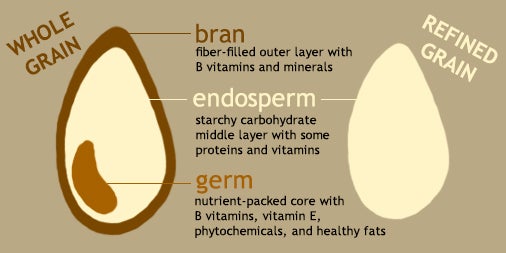Whole grains—think brown rice, steel cut oats, and quinoa—are composed of three edible parts, the fiber-filled bran, the vitamin-packed germ, and the starchy endosperm. Alternatively, refined grains like white rice, bread, and pasta, are all endosperm, as the refining process strips away the bran and germ and all the nutrients they contain. Even though many refined grains are “fortified” with vitamins and minerals, fortification cannot replace all the lost nutrients. Additionally refined grains are digested and absorbed very quickly by the body, which can be rough on blood sugar and insulin levels. As the Harvard Chan Department of Nutrition’s Dr. Frank Hu says, when it comes to whole grains “the ‘whole’ is indeed greater than the sum of its parts.”
In a recent Harvard Chan School event focused on learning about (and tasting) whole grains, Dr. Hu shared the latest research and offered attendees some key take-home messages:
- A whole grain contains all of the bran, germ, and endosperm in its kernel.

- Whole grains can provide multiple health benefits in terms of type 2 diabetes, cardiovascular disease, digestive health, and possibly cancer.
- There are many sources of whole grains! With such variety, look beyond the bread aisle and try something new like freekeh or bulgur.
- Carefully look at labels and ingredients of whole grain products to make sure they include enough whole grains and no added sugar or coloring—just because a package says “whole grain” doesn’t necessarily mean it’s healthy.
Learn more about choosing whole grains and their associated health benefits, and discover some recipes that will get you cooking with a variety of whole grains.
